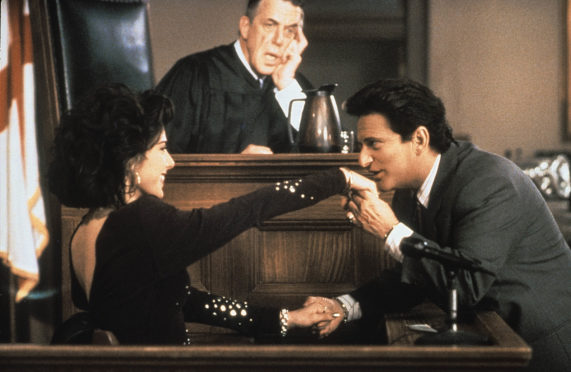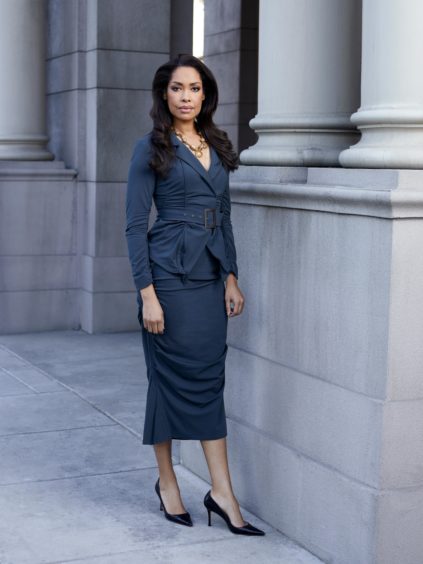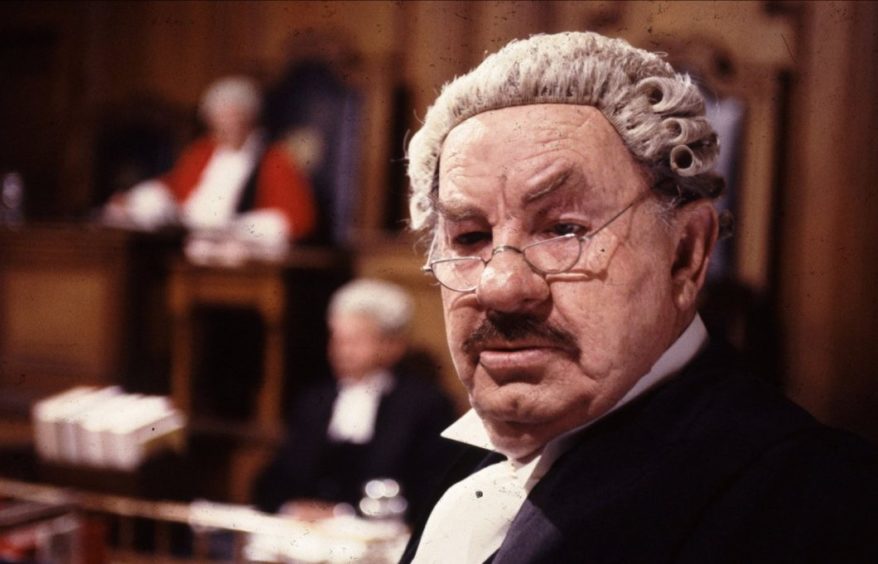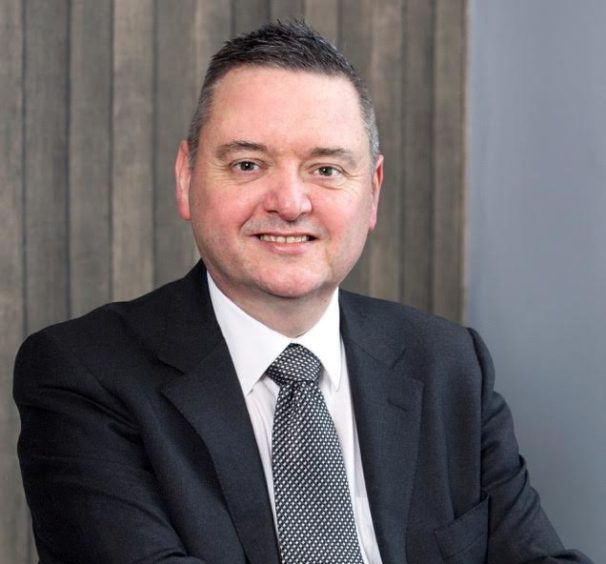
With great heroes, dastardly villains and cliffhangers in the jury room, it’s no surprise courtrooms have inspired some of our most beloved characters.
Now Perry Mason is returning to television after 27 years, with Matthew Rhys taking the legendary role made famous by Raymond Burr.
Fictional lawyers like Mason have served as an inspiration to real-life court stars.
Here, STEVIE GALLACHER speaks to three leading lawyers to hear about their favourites.
You can learn a lot from Vinny
Claire Mitchell on Vincent Gambini from My Cousin Vinny
I absolutely love the film My Cousin Vinny and, in particular, I love Vinny. We all know Joe Pesci can play terrifying, intimidating characters but this movie reminds you what an accomplished comedy performer he is too.
Vinny took seven times to pass the bar and at the outset is a blustering, know-nothing character – but what I like about him is his perseverance. Law, like a lot of professions, rewards hard work – it is by far the best way to ensure you have a successful day in court. Vinny is resilient and doesn’t let the many knocks he takes get him down.
The trial is the climax of the film and is actually very interesting from a legal perspective, too. The wrongly accused duo leave a shop, the murder scene, accidentally, but a car similar to theirs is seen by witnesses although it’s circumstantial case with no eyewitnesses to the crime.
It also involves a contentious confession – when police question them about the murder, the two think they’re confessing to taking the tin of tuna. In criminal trials it’s common to have a wholly circumstantial case and is not unusual to have eyewitnesses wrongly identifying things or witnesses saying something different to their previously given police statement. I love how Vinny changes during the trial; at the start, when he questions witnesses he’s unsure what to do and asks all the wrong questions.
Yet, by the end of the trial, he quizzes people in a way a real lawyer might – with short, direct questions. He makes sure he gets the answer he wants before moving on to the next question.
Despite being seen as a legal comedy, some law schools in the US actually study My Cousin Vinny as it’s so instructive, particularly in relation to cross-examination and the use of experts at trial.
I don’t know if I’d copy Vinny’s style. He’s a little over-the-top for a Scottish courtroom. As for Vinny’s colourful suit – I’m not sure what I’d do if I had to wear that…I’m just glad I get to wear silk.
Claire Mitchell is a leading QC and president of the Scottish Criminal Bar Association
We’re very different but I love to watch her succeed
Safeena Rashid on Jessica Pearson from Suits
Meghan Markle may have made most headlines when she left the classy American legal drama Suits, but my favourite character is Jessica Pearson, played by the excellent Gina Torres.
We certainly have different lives – she is African American and I am from a Scottish-Pakistani background – but her journey to the top of her firm intrigues me.
I’m pleased to see her in such a powerful, albeit fictional, position. Perhaps as a result of drive, determination and hard work, her gender or ethnic origins do not impede her success. She is also mentor to other characters and mentorship is integral to the Scottish Bar.
When you’re devilling (training to become an advocate) you shadow an advocate and, although they’re technically training their competition, the relationship is quite intimate. You work so closely with them that sometimes it feels like you are literally their shadow. That collegiate atmosphere means you often rely on senior colleagues for advice. It’s good to know I can pick up the phone to ask more experienced advocates for advice.
Jessica is impressive; smart, capable and powerful. You don’t mess with her.
I imagine a woman like her has faced the same problems as me. Sadly, a lot of times I’ll turn up to the court room and people will assume I’m a witness or, more commonly, the interpreter before I have to make clear I’m the lawyer.
I like to think that with every encounter, I’m challenging stereotypes of what a typical lawyer looks like.
Safeena Rashid is an advocate specialising in criminal and personal injury cases
He never prosecutes. Neither do I
Thomas Ross on Horace Rumpole from The Rumpole of the Bailey
The Rumpole of the Bailey books arrived on television around the time I decided I wanted to be a lawyer. Horace Rumpole tortured witnesses, teased judges, charmed juries and rang rings around colleagues before retiring to Pomeroy’s wine bar for a glass of cheap claret. He made the job look a lot of fun!
Having worked at it for 35 years, I now appreciate the stories even more. The author, John Mortimer, followed his father to the English Bar and, as a result, he gets all the technical stuff spot on. Court dramas tend to drive lawyers up the wall because they rarely get the nuts and bolts right; he always did and the 20% that was fiction just made the stories more entertaining.
I’m not sure if much of Rumpole’s style rubbed off on me. People perhaps expect a court lawyer to showboat like Rumpole but I don’t do much, if any, of that; the most important thing is to keep a connection with the jurors so they give you a chance when you address them at the end of the case.
Perhaps one of Rumpole’s principles rubbed off on me, however. At the Scottish Bar there has historically been an expectation that you spend around three years working for the government, prosecuting cases in the High Court.
I was approached several times but always refused. The government can pay for experienced court lawyers and surely the man in the street is entitled to a few too. As Horace proudly stated “Rumpole never prosecutes”, and neither do I.
Thomas Ross is a leading QC and former president of the Scottish Criminal Bar Association

Enjoy the convenience of having The Sunday Post delivered as a digital ePaper straight to your smartphone, tablet or computer.
Subscribe for only £5.49 a month and enjoy all the benefits of the printed paper as a digital replica.
Subscribe
 © Dutch Oven/Kobal/Shutterstock
© Dutch Oven/Kobal/Shutterstock

